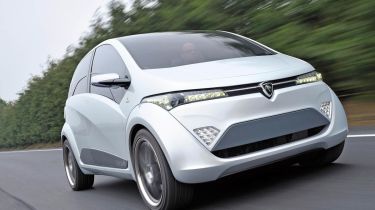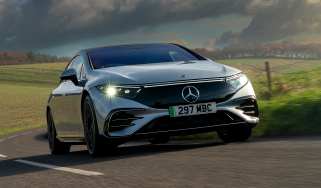Proton/ Lotus EMAS
We take wheel of range-extending hybrid that’s the basis of British firm’s new city car
A production version of the EMAS is still a long way from showrooms, but it’s expected to sit alongside the reborn Esprit and Elan in Lotus’ new line-up in 2014. In the meantime, the firm is focusing on bringing its range-extending technology to the market. The set-up is so flexible that Auto Express has already sampled it in a car as large as Jaguar’s XJ-based LimoGreen concept. So there’s no reason why it can’t power a variety of models, and be a realistic choice for the average buyer in the next few years.
It's the fuel-sipping city car that could secure the future of the Esprit! At last September’s Paris Motor Show, Lotus revealed a new range of high-performance supercars – as well as a compact eco-friendly hatch. The city car is based around this, the EMAS, which has been developed with Lotus’ parent company Proton. And Auto Express has driven it.
Think of the EMAS as Lotus’ answer to the Aston Martin Cygnet. Its clever range-extending technology will allow the sports car maker to lower the average CO2 output of its range, and meet strict new emissions rules – in turn ensuring the future of the new V8-engined Esprit.
Used - available now

2021 Volkswagen
Polo GTI
54,017 milesAutomaticPetrol2.0L
Cash £15,397
2023 Ford
Focus
33,291 milesManualPetrol1.0L
Cash £15,397
2025 Vauxhall
Corsa
23,903 milesAutomaticPetrol1.2L
Cash £15,297
2023 Audi
Q3
55,572 milesAutomaticDiesel2.0L
Cash £22,197But what technology does it feature? EMAS stands for Eco Mobility Advance Solution, and under the skin is an electric motor hooked up to a range-extending engine. The motor turns the wheels, and is fed by a battery pack under the floor. When the batteries’ charge begins to wane, the Lotus-designed range-extending engine kicks in, spinning up the generator and restoring their power.
The 1.2-litre three-cylinder unit can run on a variety of fuels, from unleaded petrol to methanol and ethanol. With petrol in the tank, and the battery fully charged, the EMAS goes about 350 miles – of which 30 miles is on zero-emissions electric power. As a result, CO2 is quoted at only 60g/km, while we estimate fuel economy at 150mpg-plus!
Lotus claims 0-62mph in less than 15 seconds, and while the car doesn’t feel as fast off the line as some electric models, it makes up for this by quickly getting to a comfortable 60mph cruise. That’s the speed at which the engine can sustain charge to the batteries, but in theory it can hit 105mph.
Generally, concepts like this are rough to drive, and the EMAS is no different. Yet it corners with minimal body roll and feels stable at speed and under braking. You also get a sense of space inside.
Under the skin are the remnants of a Toyota iQ, but the EMAS has more room than Mercedes’ B-Class. A panoramic roof adds to the airy feel, while huge side windows aid visibility.
The doors open electronically, and each has climate control switches. The console resembles Volvo’s ‘floating’ design, and it houses gearbox controls that look no different to a modern auto’s.
Above that is a pair of screens. The lower one is touch-sensitive, and controls climate, sat-nav and entertainment settings. The upper one is a customisable info display.
Lotus and Proton are working with another, as yet unnamed manufacturer to put the EMAS into production. Three vehicles are expected – one for Asia, one for Europe and a sportier model. And if it safeguards Lotus’ supercars, we’re all for it.



